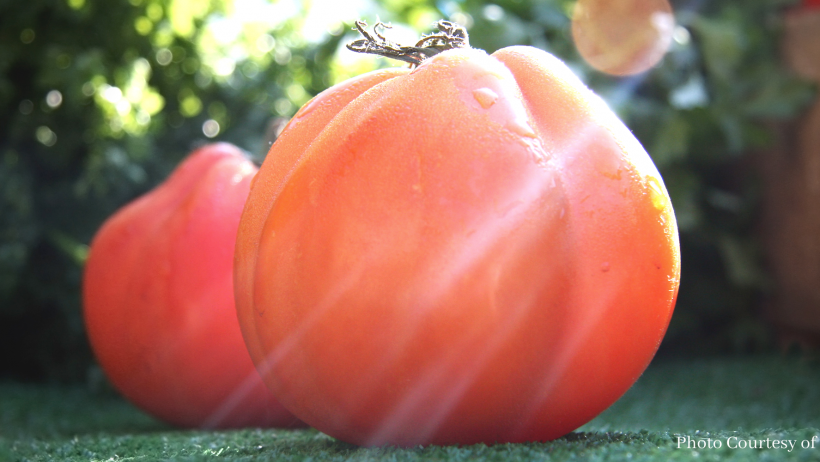Fall season is here and beautiful colours are in the trees, on the ground, and within the common foods that are in-season at this time. Of course, most people can get almost any vegetable or fruit at major grocery stores at any time of the year. That doesn’t necessarily mean that those items are in season, as there is often a great distance that some produce travels. In this case, food gets harvested or picked early, before becoming ripe, and often goes through it’s full ripe cycle before even reaching the grocery store shelves. This product becomes very low quality and very low in nutrients that your body is craving. The most talked about example is the story of the tomato. When this wonderful fruit is being shipped to other countries, it’s picked well before it’s ripe stage, even before it starts to change colour. It is believed that an organic compound gas called Ethylene is used during transportation in some cases, to speed up the ripening process of tomatoes. What’s also significant in this process is the environmental effects it has, as the refrigerated truck that ships these fruits expel the gas into the air, and require more fuel to power these fridges. This ingenuity can be commended, but in the end, the tomato is still not actually in its ripest state, nor consisting of its richest nutrients.
A solution to avoid this is to either create your own garden or buy locally grown produce, while keeping in mind which foods are in season. The term “local” is often referencing produce sources from within the same town or region. But I believe this can also be applied to food within the same province. This means buying actual fresh produce that provides optimal amounts of nutrients, ensuring great quality, all the while supporting local farms, families and businesses, as well as supporting yourself and your family! Now, if you are not able to grow your own garden, you don’t always need to look for a farmer’s market, or even more expensive whole foods markets. Usually you can depend on larger grocery stores to provide local produce, especially if it’s in-season! But what if you’re in a grocery store and their produce has such a vast selection that it’s hard to decipher which is locally grown, and which isn’t. Well, I can help you by going over some examples of fruits and vegetables that are currently in season in B.C.
Let’s start with gourds, or the squash family. This group of vegetables include assorted types of winter squash, butternut squash, pumpkins and zucchini. These are all available throughout B.C. and most likely in large box grocery stores. In the fall season, some of these stores SHOULD have local gourds in stock, but make sure you check labels. Pumpkins are a stand out in the group, however is often not considered delectable to eat. The seeds though are wonderful to roast soon after making jack-o-lanterns for Halloween. In general, squash are high in carotenoids (a phytonutrient that acts as an antioxidant to help the body’s immune system), high in Vitamin A & C, quite high in fibre, and excellent source of B-vitamins. Although most winter squash are high in carbs, they are low i the glycemic index, so they wouldn’t spike blood sugar much at all.
Next are root vegetables. These plants are naturally ripest during the fall season, as they are richest in flavour at this time, and have not been as affected by the cooling weather, as above ground veggie plants such as leafy greens, peaches or green beans tend to be. Root vegetables in B.C. that are best in the fall season are beets, carrots, parsnips, potatoes and turnips. A great way to pick the best quality root vegetables in a store are checking firmness (the firmer the better) and making sure there are very few nicks, gouges or bruises, and has a smooth texture. Root veggies in general are a great source of biotin, a B-vitamin complex that benefits sugar and fat metabolism, fibre, Vitamin B6, Vitamin C, Copper and potassium. Root veggies work great in soups, which are perfect for the lowering temperatures and our instinctual desire for warmer, easily made, quick to reheat meals. Many of these vegetables work great roasted as well. What’s great about a roasted medley is its kind of hard to mess up, and it’s easy to adjust ingredients for taste, such as assorted cooking oils, different seasoning such as curry, turmeric, cinnamon or dill. Personally, I like adding a little sweetness to roasted medleys from fruits such as pears or apples.
Speaking of which…
There are still a few fruits that are in-season in B.C. through the fall. Apples, Pears and tomatoes are ripe pretty much throughout B.C. during the month of October, while apples and pears for the most part continue to be in-season during November as well. Some berries can also be found within the southern part of B.C., giving some of you access to local blueberries, raspberries, strawberries and even cranberries. All of these berries are plentiful in Antioxidants, which help benefit the body’s immune responses, very timely for the upcoming traditional flu season. I always recommend to people that fruit is best consumed raw to take advantage of the highest possible levels of macro and micro nutrients that they provide. The life of these fruits can also be extended by either dehydration or canning by making fruit jams/jellies.
Another couple of my favourite in-season products are mushrooms and bulb vegetables such as onions and garlic. All of these vegetables are versatile and jam packed with nutrients. Most significant benefactor within onions and garlic are their detoxifying effects on the body, which, much like many of the foods listed here, help wth immunity. Garlic has also been shown in recent studies to benefit cardiovascular disease and high blood pressure for it has been shown to decrease inflammation causing blood vessel damage, if consumed regularly. If you are interested, check out one study by clicking the website link at the end of this blog. I’ve noticed that mushrooms still seem to turn a few people off, but they are a very nutritious food option, especially when cooked properly. A good trick, for both child and adult detractors, is mix in mushrooms in plenty of your family’s dishes, such as an omelet, soup, pasta sauce, even pizza for the kids. The taste really does grow on people. Mushrooms most prominently provide copper and selenium minerals, both of which benefit thyroid gland functioning.
As mentioned above, keeping in-season produce in mind when shopping for yourself or the family will naturally provide fresher and more ripe produce to your eating regimen. In some cases, this routine can perpetrate more socializing and supporting of local farmers around your community, and this practice will give you a little bit of knowledge of when to harvest the produce the next time you start a garden! Let’s refresh those instincts we all have deep down!
Please be safe this Halloween!



